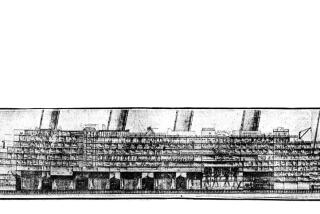Return of the broad-brimmed hat
The men’s wardrobe arena is a place where even the slightest change in lapel width unfolds at a glacial pace. So it’s worth noting that the standard-issue stingy-brim fedora is giving way to its broader-brimmed brethren on the menswear runways, magazine covers and the big screen.
The most high-profile example may be “The Adjustment Bureau,” a romantic sci-fi thriller currently in theaters. The film not only includes the highest fedora-to-actor ratio of any film in the last four decades, but it employs the humble hat as a small but significant plot device.
The movie centers on a rising-star politician, played by Matt Damon, and the shadowy G-men of fate who mysteriously appear to help nudge his life trajectory in a certain direction.
George Nolfi, the movie’s director — who wrote the screenplay based on a 1954 Philip K. Dick short story that contains nary a hat — says there were a couple of reasons his film includes a serious tip of the hat. Chief among them was a hat-wearing man cuts a distinctive silhouette.
“From a filmmaker’s point of view, that’s important,” Nolfi says. “Especially when the conceit of the story is that these people are all around us and we just don’t notice them.”
Nolfi also points to the symbolic value of headwear. “They have significance in all sorts of activities,” he says. “From the crown worn by a king to the covering of your head in Judaism, hats are an incredible symbol in terms of suggesting much larger structures.”
Nolfi and the film’s costume designer, Kasia Walicka Maimone, couldn’t be happier that the reality of movie — at least wardrobe-wise — happens to dovetail with what’s currently happening beyond the silver screen.
“It’s exciting to see hats in so many places — on the street and on the fashion runways,” Walicka Maimone says.
The runways she’s referring to are the recent fall-winter 2011 menswear shows, where hats of nearly every conceivable silhouette and fabrication cropped up. There were Tyrolean-inspired caps at Etro, Western-style hats at Dsquared2 in Milan, extra-broad brimmed hats at Lanvin in Paris and quintessentially British bowlers at Rag & Bone in New York.
If you’re still not convinced that there’s a broader-brimmed renaissance in full bloom, capping off the current pop-culture hat trick is no less a style barometer than the cover of Vanity Fair magazine. Staring from the cover of the April issue is Robert Pattinson — he of the preternaturally perfect, carefully choreographed coif, framed in a generous halo of hat brim.
The boom in broad brims isn’t confined to the catwalks and the fashion magazines, say the folks at some of the country’s oldest hat brands.
“There is a trend toward larger brims and more Western styles,” says Pam Fields, chief executive of Stetson. “A few years ago it was all about the stingy brim. These styles are still selling quite well, but larger brims are making a comeback.” (A stingy brim or a “shorty” is generally considered a brim 11/2 inches wide or smaller, 2 inches is standard and anything above 21/4 inches in width is a broad brim.)
Ben Goorin, a fourth-generation hatter and president of the San Francisco-based Goorin Bros. hat label, concurs. “We’ve been adding wide-brim fedoras this year because last year we had a lot of people coming into our stores and asking for them.”
Goorin says the move toward the wider brim began in earnest in the middle of 2010. He traces the genesis to the same crowd that was quick to embrace the stingy brim. “When the more fashion-forward people — the hipsters or whatever you want to call them — started realizing that everyone was starting to wear them, they realized it was time to move on to something else. So now they’re going back to the classics from the 1930s and ‘40s, when fedoras first came out.”
Prices can range wildly, based on fabrication and brand. Expect the newly trendy broad-brimmed fedora to cost $36 to $200 — a small price to pay, perhaps, if you consider what Goorin says he’s noticed about his customers:
“The wider the brim,” Goorin says, “the more confidence the individual has.”





